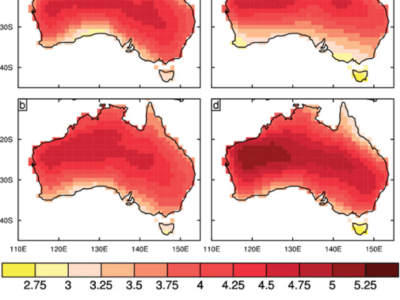Good News from “Down Under”
Legal Planet: Environmental Law and Policy 2022-05-23

Australia has had a change of government. The Liberal Party — conservative in everything but name — lost control of the federal government to Labor. Australia was recently ranked last out of sixty countries in climate policy.The victorious Labor candidate told his supporters, “Together we can end the climate wars. Together we can take advantage of the opportunity for Australia to be a renewable energy superpower.”
The new premier’s views sharply contrasted with those of his predecessor. The Liberals had done as little as possible to address climate change. The defeated Prime Minister “once brought a lump of coal into Parliament, passed it around and told fellow lawmakers, ‘Don’t be scared, it won’t hurt you.’” So the change in government is more than welcome.
The outgoing Liberals weren’t helped electorally by their foot-dragging about climate change. Australia has been a poster child for the effects of a changing climate, with record-breaking heatwaves, huge wildfires, and intense droughts interspersed with record rainfall. Climate change wasn’t a central issue in the campaign, but resistance to climate action no longer provided a political advantage. Polling showed broad public support for more aggressive cuts in carbon emissions. Labor soft-pedaled its position to avoid losing votes. But newly energized third-party candidates pressed the issue in urban areas. The Green Party had its best-ever electoral results, picking up some seats and getting 12% of the total vote. “Teal” independent candidates running on platforms of government integrity and climate action also picked up seats at the expense of the Liberals, i.e. conservatives.
Labor’s climate policy calls for a 43% reduction in carbon emissions by 2030. It promises AU$20 billion to upgrade the grid, lower taxes on electric vehicles, AU$3 billion to cut emissions from heavy industry, building of 85 solar farms and 400 utility-scale storage facilities. (In case you’re wondering, the exchange rate is now about AU$1.40 to a U.S. dollar.) These measures won’t make Australia a climate star, but they will help it clean up its act.
Changing Australia’s trajectory will not be easy. Coal is a major industry in Australia, which has a rich supply and is well-situated to supply Japan, India and South Korea. Coal exports are 3.5% of total GDP. As in the U.S., there are regions where coal looms larger, such as Queensland. Australia gives AU$11 billion a year to subsidize fossil fuel industries, and another AU$55 billion for supportive infrastructure and activities. In short, there are powerful vested interests involved.
Despite the obstacles, however, at least Australia now seems to be heading in the right direction politically. Another encouraging sign: More than a quarter of Australian homes now have solar panels.
Let’s not forget that every journey of a thousand miles begins with a single step. Australia has now taken that step. Let’s see what happens next.
The post Good News from “Down Under” appeared first on Legal Planet.